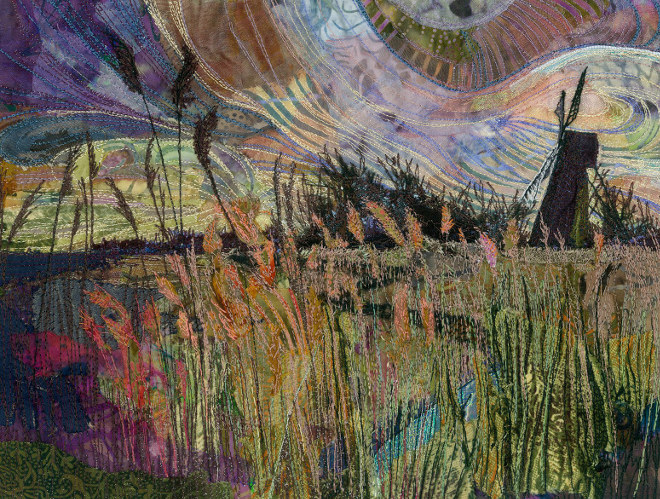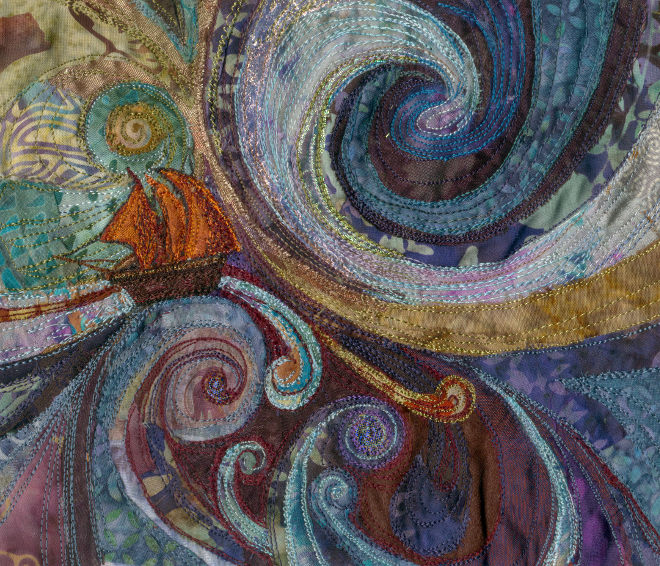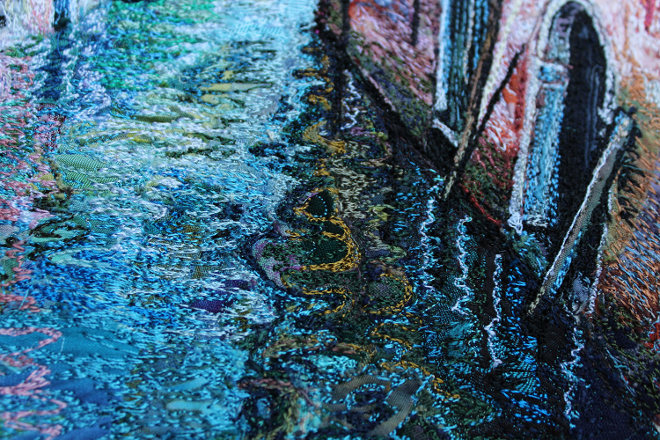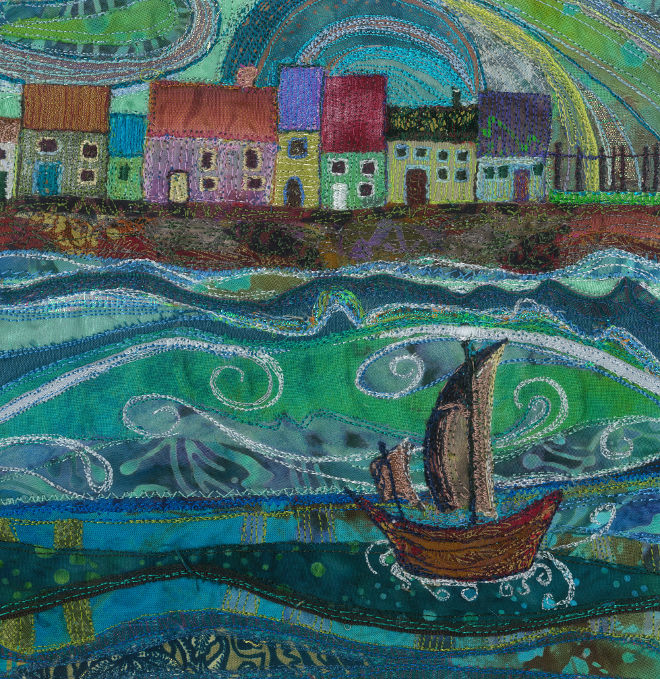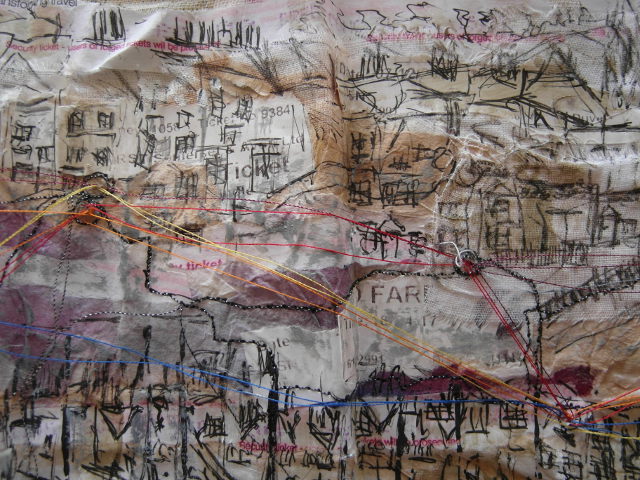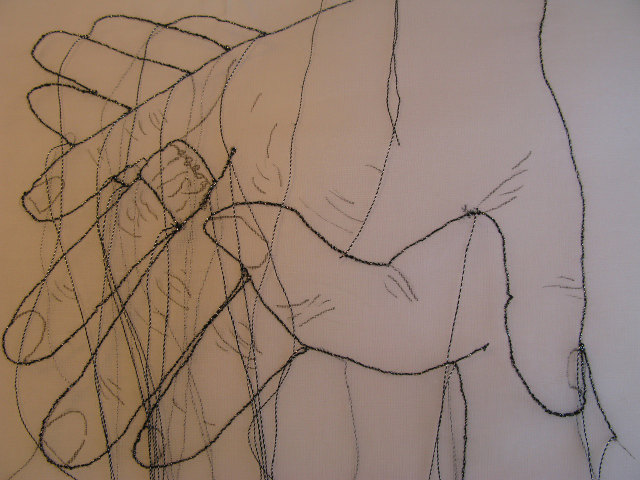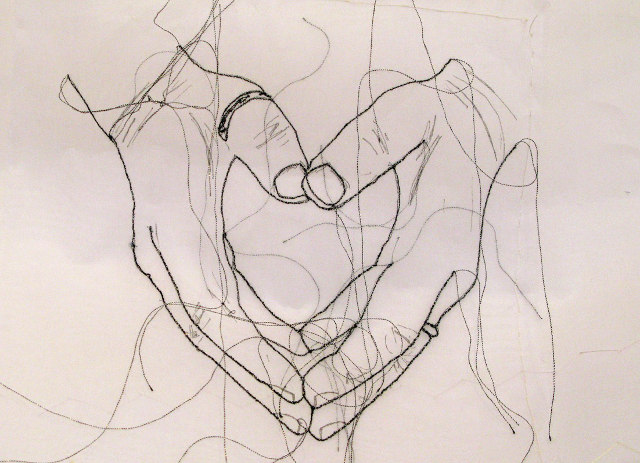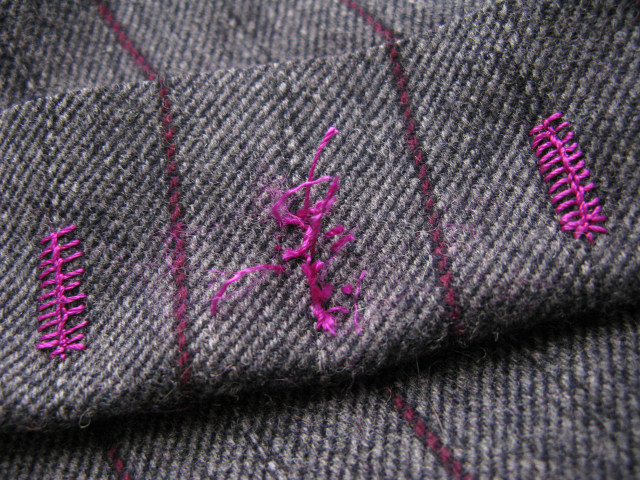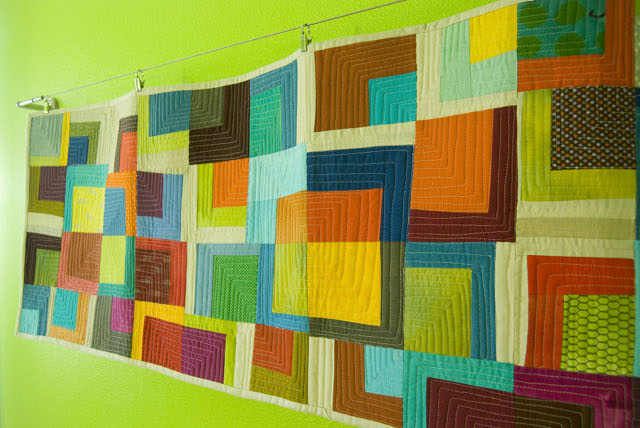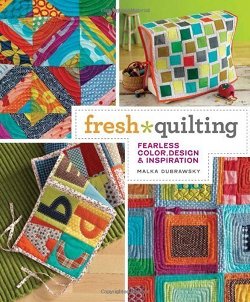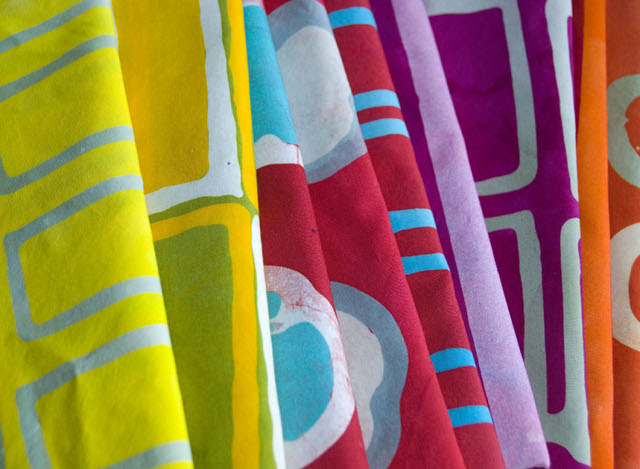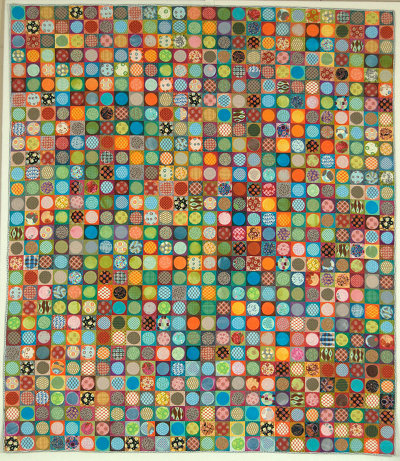 One of the features I’ve most enjoyed writing recently is Oh Sew Beautiful for Simply Sewing issue 34 (in shops and available to buy online now). It gave me the chance to interview five exceptional artists who use threads and fabric as their medium.
One of the features I’ve most enjoyed writing recently is Oh Sew Beautiful for Simply Sewing issue 34 (in shops and available to buy online now). It gave me the chance to interview five exceptional artists who use threads and fabric as their medium.
Harriet Riddell, Ian Berry , Jessica So Ren Tang, Nigel Cheney and Michelle Kingdom each create worlds of light, shade, texture and dreams using their textiles of choice.
Harriet captures the scenes and faces she encounters on her travels using a peddle-powered sewing machine. “I like to work from life and use my surroundings as a colour reference,” she says. “I love the tactile nature of textiles. I love textures and how strong the use of line can be when in thread.”
The gorgeous painterly quality of Ian’s artwork is achieved through hours of painstaking effort. “They take a long time to create, layering up the denim pieces and also finding the perfect shade,” he says. “When I open up the pocket, underneath you’ve got such a strong indigo, with a gradient to where the pocket opens. I see the fade in the cat’s whiskers, the amazing contrasts around the belt and a hem, and all of this allows me to use the denim like paint.
Jessica fell in love “with the softness and tactile nature of embroidery. I could create 3D objects and illustrative thread paintings with textile and fabric. It offered the potential to create something new and different.”
Nigel is passionate about fabrics. “There’s something about the quality of colour when it’s in a soft material that can’t be beaten,” he says. “The way that linen will have a faded grandeur and silk a bloom and depth of shimmering colour is so seductive. The tactility of different fibres, their textures and physical properties never fail to make my heart sing.”
Using threads was instinctual for Michelle. “While it’s inherently beautiful, there’s also something primitive, awkward and fragile about it, which strikes me as both compelling and honest,” she says. “Undeniably tactile in nature, embroidery touches not only the seamstress in me, but connects me to the memory of so many women with stories buried in thread that came before me.”
Michelle’s preferred technique is to use thread loosely as a drawing tool. “More and more I move away from traditional stitch technique and prefer to play with thread in intuitive ways to recreate the medium. I tackle one new piece at a time and continue to plough ahead on new ideas. The medium seems the best way for me to express my private thoughts, and its results still surprise me after all these years.”
Read the full issue in Simply Sewing issue 34.






